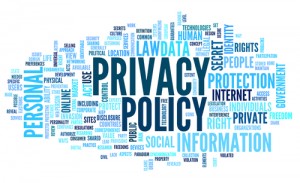Posted by Health Law Informer Author
on September 03, 2015
HHS,
HIPAA,
OCR /
No Comments
In August 2012, a Physician Group—comprising of nearly 20 physicians—reported its HIPAA breach to HHS, which resulted from a laptop bag containing the employee’s laptop and a computer server backup being stolen from an employee’s car in July 2012. According to the Resolution Agreement between HHS and the Physician Group, the laptop did not contain ePHI, but the portable, unencrypted server backup in the employee’s bag did. The backup contained ePHI for 55,000 individuals. To settle this matter, the Physician Group has agreed to pay $750,000.
Although stolen laptops and lack of encryption is nothing new in the world of HIPAA breaches, this situation stands out for a few reasons:
- The Physician Group did not conduct “an accurate and thorough” risk assessment;
- The significance of encryption extends not only to desktop computers and laptops, but also to portable devices, including but not limited to computer server backups; and
- This is a notable fine for a Physician Group of less than 20 physicians.
For more information regarding this incident and HIPAA compliance, including the importance of encryption and risk assessments, contact J. Nicole Martin or any member of Cozen O’Connor’s healthcare law team.
About The Author
Tags: breach, computer server, encryption, ePHI, HIPAA, laptop, physician group, Security Rule
Posted by Health Law Informer Author
on December 04, 2014
CMS,
HHS,
HIPAA,
OIG /
No Comments
 On October 31, 2014, The U.S. Department of Health and Human Services (HHS) Office of Inspector General (OIG) released its Work Plan for fiscal year (FY) 2015. The Work Plan summarizes “new and ongoing reviews of activities that OIG plans to pursue with respect to HHS programs and operations during the current fiscal year and beyond.” In the Work Plan OIG identified several areas related to HIPAA and/or information technology that it will examine and address during FY 2015.
On October 31, 2014, The U.S. Department of Health and Human Services (HHS) Office of Inspector General (OIG) released its Work Plan for fiscal year (FY) 2015. The Work Plan summarizes “new and ongoing reviews of activities that OIG plans to pursue with respect to HHS programs and operations during the current fiscal year and beyond.” In the Work Plan OIG identified several areas related to HIPAA and/or information technology that it will examine and address during FY 2015.
As a new addition to the Work Plan, OIG will determine the extent to which hospitals comply with the contingency requirements of HIPAA. HIPAA’s Security Rule requires covered entities and their business associates to have in place a contingency plan that establishes policies and procedures for responding to an emergency or other event (such as, for example, natural disasters, system failures, terrorism) that damages systems containing electronic protected health information (ePHI). These policies and procedures must, at a minimum, include data backup plans, data recovery plans and plans to continue to protect the security of ePHI while operating in emergency operations mode. In the Work Plan OIG advises that it will compare contingency plans used by hospitals with government and industry recommended practices.
As part of the Work Plan, OIG will continue to examine whether the Centers for Medicare & Medicaid Services’ (CMS) oversight of hospitals’ security controls over networked medical devices is sufficient to protect ePHI. The OIG noted that computerized medical devices such as dialysis machines, radiology systems and medication dispensing systems that use hardware, software and networks to monitor a patient’s condition and transmit and/or receive data using wired or wireless communications pose a growing threat to the security and privacy of personal health information.
OIG also plans to continue to perform audits of covered entities receiving incentive payments for the use of electronic health records (EHRs) and their business associates (including cloud providers) to determine whether they are adequately protecting ePHI created or maintained by certified EHR technology. In addition, OIG will review the adequacy of CMS’ oversight of states’ Medicaid system and information controls. Prior OIG audits found that states often fail to have in place adequate security features, potentially exposing Medicaid beneficiary information to unauthorized access.
As to future endeavors, the Work Plan stated that other areas under consideration for new work include the security of electronic data, the use and exchange of health information technology, and emergency preparedness and response efforts. In addition, OIG advises that in FY 2015 and beyond, it will continue to focus on IT systems security vulnerabilities in health care reform programs such as health insurance marketplaces.
About The Author
Tags: 2015, Business Associate, cms, covered entity, EHR, ePHI, health care reform, health insurance marketplace, HHS, HIPAA, medicaid, OIG, Security Rule, work plan
Posted by Health Law Informer Author
on November 18, 2014
CDC,
HHS,
OCR /
No Comments
 In response to the recent Ebola outbreak in West Africa and in light of patients being treated in several hospitals in the U.S., the HHS, OCR (OCR) recently issued a HIPAA Bulletin to remind us that HIPAA covered entities and business associates must maintain the privacy of protected health information (PHI) even in emergency situations (“Guidance”). According to the OCR, the Guidance serves as a reminder “that the protections of the [HIPAA] Privacy Rule are not set aside during an emergency.”
In response to the recent Ebola outbreak in West Africa and in light of patients being treated in several hospitals in the U.S., the HHS, OCR (OCR) recently issued a HIPAA Bulletin to remind us that HIPAA covered entities and business associates must maintain the privacy of protected health information (PHI) even in emergency situations (“Guidance”). According to the OCR, the Guidance serves as a reminder “that the protections of the [HIPAA] Privacy Rule are not set aside during an emergency.”
The OCR explains that the HIPAA Privacy Rule requires a balance between the protection of the privacy of PHI against the necessary uses and disclosures of such information “to treat a patient, to protect the nation’s public health, and for other critical purposes” during emergency situations. Although the OCR introduces no new requirements under the HIPAA Privacy Rule, the Guidance lays out the circumstances under which patient information may be shared in emergencies, such as for/due to:
- Disclosures to Family, Friends, and Others Involved in an Individual’s Care and for Notification
- Disclosures to the Media or Others Not Involved in the Care of the Patient/Notification
- Imminent Danger
- Public Health Activities (i.e., to a public health authority; at the direction of a public health authority, to a foreign government agency; and to persons at risk)
- Treatment
The OCR reminds us that most disclosures require covered entities to make “reasonable efforts to limit the information disclosed to that which is the ‘minimum necessary.’” Further, covered entities are also required to: (i) implement “reasonable” safeguards necessary to protect PHI from intentional/unintentional uses and disclosures that are impermissible under HIPAA; and (ii) continue to apply administrative, physical and technical safeguards to protect e-PHI under the HIPAA Security Rule.
Further, according to the OCR, under the Project Bioshield Act of 2004 and Section 1135(b)(7) of the Social Security Act, the Secretary of HHS may waive certain HIPAA Privacy Rule provisions during public health or other emergencies. Such limited waivers require both the President to declare an emergency or disaster and the Secretary of HHS to declare a public health emergency. Additional information regarding the limited waivers appears in the Guidance.
As Ebola remains an emergency of both national and international concern, it not surprising that federal agencies continue to publish updated Ebola guidance. This Guidance reminds all of us, especially covered entities and business associates, that even in emergency situations, patient privacy must be protected, unless the limited waiver is invoked, and if not, covered entities and business associates will face consequences for violating the HIPAA Privacy Rule. For additional information regarding the HIPAA Privacy Rule in the context of emergency situations, see the HHS website. Also see similar guidance (Bulletin and Bulletin published by HHS in 2005 in response to Hurricane Katrina.
About The Author
Tags: business associates, CDC, covered entities, Ebola, emergency, HHS, HIPAA, outbreak, PHI, privacy, Privacy Rule, protected health information, Security Rule
Posted by Health Law Informer Author
on September 26, 2014
ACA,
CMS,
HHS,
HIPAA,
HITECH,
Privacy /
No Comments

12,915 complaints were reported in 2013 to the Department of Health and Human Services Office of Civil Rights (“OCR”) according to Illiana L. Peters, Senior Adviser for HIPAA Compliance and Enforcement. Cozen O’Connor attended Ms. Peters’ presentation at the Safeguarding Health Information: Building Assurance through HIPAA Security conference on September 22-23, 2014. The conference was hosted jointly by OCR and the National Institute of Standards and Technology (“NIST”). Below are a few discussion points worth mentioning from the conference:
- Between September 2009 and August 31, 2014, OCR investigated 1176 reports involving breach of Protected Health Information (“PHI”) where more than 500 individuals were affected and approximately 122,000 reports affecting less than 500 individuals.
- According to Ms. Peters, 60% of the large breaches could have been prevented by encrypting the covered entities and business associates’ laptops and mobile devices.
- Theft and loss continues to be the most common cause of breaches but OCR expects that IT hacking will continue to rise as a significant breach risk.
- Since 2009, consumer complaints regarding HIPAA violations continue to rise.
- Covered entities and business associates should already have in place business associate agreements that have been updated for the Omnibus Rule.
- Business associates must comply with all of the HIPAA Security Rules applicable to covered entities, “PERIOD.”
- Given the known risks of hacking, theft and loss and the direct guidance from OCR, covered entities and business associates must recognize that inadequate security, inadequate physical and technical safeguards is not acceptable.
- OCR expects that covered entities and business associates will be familiar with recent corrective actions, resolution agreements such as Parkview, NYP/Columbia, Concentra, QCA, Skaget County, Adult & Pediatric Dermatology, P.C., and Affinity Health Plan, Inc.
Continue reading…
About The Author
Tags: audit, breach, Business Associate, HHS, HIPAA, HITECH, NIST, OCR, Privacy Rule, Security Rule
Posted by Health Law Informer Author
on July 29, 2014
HIPAA,
HITECH /
No Comments
 Daily news stories about data breaches and enforcement actions seem to be the new norm, so it’s no surprise that people may start to believe that hackers have won the war and that no personal health information is safe. But exactly how many breaches have been reported in the last several years? And were the breaches the result of nefarious plots or just plain incompetence? About how many HIPAA investigations has the government actually launched?
Daily news stories about data breaches and enforcement actions seem to be the new norm, so it’s no surprise that people may start to believe that hackers have won the war and that no personal health information is safe. But exactly how many breaches have been reported in the last several years? And were the breaches the result of nefarious plots or just plain incompetence? About how many HIPAA investigations has the government actually launched?
Rest assured, Congress has been asking similar questions as well. The HITECH Act requires the Department of Health and Human Services Office for Civil Rights (OCR) to submit annual reports to Congress that provide contextualized information about incident rates and government action; OCR published its most recent two reports on Breaches of Unsecured Protected Health Information (Breach Report) and HIPAA Privacy, Security, and Breach Notification Rule Compliance (HIPAA Compliance Report). In addition to including cumulative data, the reports cover relevant activities that occurred between January 1, 2011, and December 31, 2012. Continue reading…
About The Authors
Tags: breach, breach notification rule, Compliance, encryption, ePHI, HHS, OCR, Privacy Rule, Security Rule
Posted by Health Law Informer Author
on May 28, 2014
HIPAA /
No Comments
 The Department of Health and Human Services (HHS) Office for Civil Rights (OCR) settled for the collective amount of $1,975,220 with Concentra Health Services (Concentra) and QCA Health Plan, Inc. (QCA). The settlements stem from OCR investigations in 2011 and 2012 related to each of the companies reporting a single stolen laptop; Concentra also had a laptop stolen in 2009.
The Department of Health and Human Services (HHS) Office for Civil Rights (OCR) settled for the collective amount of $1,975,220 with Concentra Health Services (Concentra) and QCA Health Plan, Inc. (QCA). The settlements stem from OCR investigations in 2011 and 2012 related to each of the companies reporting a single stolen laptop; Concentra also had a laptop stolen in 2009.
In its press release, HHS stated that after further investigating Concentra it found that Concentra was aware prior to the most recent laptop theft that not all of its laptops, desktop computers, medical equipment, tablets and other devices that contained ePHI were encrypted. But despite Concentra’s discoveries as a result of risk analyses that it had conducted, it failed to remedy the critical risks and did not encrypt all of the devices. OCR also found that Concentra had insufficient security management processes. OCR’s investigation of QCA revealed that in addition to the unencrypted laptop, QCA failed to comply with numerous HIPAA privacy and security requirements for several years.
Susan McAndrew, OCR’s Deputy Director of Health Information Privacy, reiterated the significance of encryption and the obligations of covered entities and business associates to adequately secure mobile devices when she stated that OCR’s message to covered entities and business associates is simple: “encryption is your best defense against these incidents.” Ms. McAndrew’s statement is significant and a shift from the view that although security is an obligation, encryption is not required under the HIPAA Security Rule. In light of these two settlements and the Deputy Director’s commentary it is evident that OCR views encryption as an essential security safeguard for laptops, desktop computers, medical equipment, tablets and other mobile devices. In light of these two settlements and the Deputy Director’s commentary it is evident that OCR views encryption as an essential security safeguard for laptops, desktop computers, medical equipment, tablets and other mobile devices.
Concentra has agreed to pay HHS a monetary settlement of $1,725,220 and QCA has agreed to pay $250,000. Both entities have also agreed to each undertake a corrective action plan (CAP), which CAPs include risk analyses, development of risk management plans, policy and procedure revisions, staff training and certification of staff training. Concentra’s CAP contains more onerous requirements, including the continued submission of additional documents, reports and encryption status updates to HHS. Concentra’s CAP may be more extensive than QCA’s because it already had a laptop that contained ePHI stolen in 2009 and because it failed to remedy the encryption issue it discovered during the risk analyses it performed prior to the second laptop being stolen. OCR also noted that QCA did encrypt its devices after the laptop was stolen and it discovered the breach.
For more information about the settlements and the CAPs, see the Concentra Resolution Agreement and the QCA Resolution Agreement.
Practice Tip: Audit your encryption policies and practices for all mobile devices to adequately secure your company’s mobile devices.
About The Authors
Tags: breach, corrective action plan, encryption, ePHI, HHS, OCR, risk assessment, Security Rule, self-disclosure, self-report, technical safeguards
Posted by Health Law Informer Author
on May 23, 2014
HIPAA /
No Comments
 In the largest HIPAA enforcement action to date, the Department of Health and Human Services (HHS) Office for Civil Rights (OCR) extracted $4.8 million from two leading New York institutions, New York-Presbyterian Hospital (NYP) and Columbia University (CU), despite NYP and CU’s self-disclosure of the breach. OCR charged NYP and CU jointly with failing to secure 6,800 patients’ electronic protected health information (ePHI), which resulted in a 2010 breach. NYP and CU did not learn of the breach until a complaint was filed by a representative of a deceased former NYP patient whose ePHI was found on the Internet. The patient data included status, vital signs, medications and laboratory results.
In the largest HIPAA enforcement action to date, the Department of Health and Human Services (HHS) Office for Civil Rights (OCR) extracted $4.8 million from two leading New York institutions, New York-Presbyterian Hospital (NYP) and Columbia University (CU), despite NYP and CU’s self-disclosure of the breach. OCR charged NYP and CU jointly with failing to secure 6,800 patients’ electronic protected health information (ePHI), which resulted in a 2010 breach. NYP and CU did not learn of the breach until a complaint was filed by a representative of a deceased former NYP patient whose ePHI was found on the Internet. The patient data included status, vital signs, medications and laboratory results.
Larger, more frequent fines may be the new normal as OCR launches its major new audit program. In its press release, HHS wrote that “neither entity had conducted an accurate and thorough risk analysis that identified all systems that access NYP ePHI. As a result, neither entity had developed an adequate risk management plan that addressed the potential threats and hazards to the security of ePHI.” OCR has made clear that risk assessment will be a priority in the upcoming audits. OCR will not be satisfied with “glossy” HIPAA policies and procedures if they are not followed in practice.
To make the point even more explicit, Christina Heide, Acting Deputy Director of Health Information Privacy for OCR, said, “Our cases against NYP and CU should remind health care organizations of the need to make data security central to how they manage their information systems.”
OCR’s investigation began after NYP and CU self-disclosed an inadvertent leakage of certain ePHI to Internet search engines when a computer server was errantly reconfigured. The source of the breach was a CU physician who had tried to deactivate a personally owned computer server on the network containing information on hospital patients. NYP and CU failed to implement technical safeguards for the deactivation of computer servers, so the attempted deactivation resulted in ePHI being posted online.
NYP has agreed to pay HHS a monetary settlement of $3.3 million and CU has agreed to pay $1.5 million. Both entities have also agreed to each undertake a substantive corrective action plan (CAP), which includes a risk analysis, development of a risk management plan, policy and procedure revisions, staff training and regular progress reports. For more information about the settlements and the CAPs, see the NYP Resolution Agreement and the CU Resolution Agreement.
HIPAA Practice Tip: Now is the time to ensure that your HIPAA policies and procedures are being implemented and followed.
About The Authors
Tags: breach, corrective action plan, ePHI, HHS, OCR, risk assessment, Security Rule, self-disclosure, self-report, technical safeguards
Posted by Health Law Informer Author
on March 12, 2013
Affordable Care Act,
HIPAA,
HITECH /
No Comments
 On January 25, 2013, the Office of Civil Rights (OCR) of the Department of Health & Human Services (HHS) published the long-awaited omnibus final regulation governing health data privacy, security and enforcement (Omnibus Rule).[i] The Omnibus Rule is a group of regulations that finalizes four sets of proposed or interim final rules, including changes to the Health Insurance Portability and Accountability Act (HIPAA) Privacy and Security Rules mandated by the Health Information Technology for Economic and Clinical Health (HITECH) Act[ii] and proposed in 2010;[iii] changes to the interim final breach notification rule;[iv] modifications to the interim final enforcement rule; and implementation of changes to the Genetic Information Nondiscrimination Act of 2008 (GINA). The Omnibus Rule goes into effect on March 26, 2013, and compliance is required by September 23, 2013. As expected, the Omnibus Rule did not finalize the May 31, 2011 proposed regulation regarding accounting for disclosures. Continue reading…
On January 25, 2013, the Office of Civil Rights (OCR) of the Department of Health & Human Services (HHS) published the long-awaited omnibus final regulation governing health data privacy, security and enforcement (Omnibus Rule).[i] The Omnibus Rule is a group of regulations that finalizes four sets of proposed or interim final rules, including changes to the Health Insurance Portability and Accountability Act (HIPAA) Privacy and Security Rules mandated by the Health Information Technology for Economic and Clinical Health (HITECH) Act[ii] and proposed in 2010;[iii] changes to the interim final breach notification rule;[iv] modifications to the interim final enforcement rule; and implementation of changes to the Genetic Information Nondiscrimination Act of 2008 (GINA). The Omnibus Rule goes into effect on March 26, 2013, and compliance is required by September 23, 2013. As expected, the Omnibus Rule did not finalize the May 31, 2011 proposed regulation regarding accounting for disclosures. Continue reading…
About The Author
Tags: Breach Notification, Business Associate, Business Associate Agreement, HIPAA, HITECH, Privacy Rule, Security Rule
 On October 31, 2014, The U.S. Department of Health and Human Services (HHS) Office of Inspector General (OIG) released its
On October 31, 2014, The U.S. Department of Health and Human Services (HHS) Office of Inspector General (OIG) released its  In response to the recent Ebola outbreak in West Africa and in light of patients being treated in several hospitals in the U.S., the HHS, OCR (OCR) recently issued a
In response to the recent Ebola outbreak in West Africa and in light of patients being treated in several hospitals in the U.S., the HHS, OCR (OCR) recently issued a 
 Daily news stories about data breaches and enforcement actions seem to be the new norm, so it’s no surprise that people may start to believe that hackers have won the war and that no personal health information is safe. But exactly how many breaches have been reported in the last several years? And were the breaches the result of nefarious plots or just plain incompetence? About how many HIPAA investigations has the government actually launched?
Daily news stories about data breaches and enforcement actions seem to be the new norm, so it’s no surprise that people may start to believe that hackers have won the war and that no personal health information is safe. But exactly how many breaches have been reported in the last several years? And were the breaches the result of nefarious plots or just plain incompetence? About how many HIPAA investigations has the government actually launched? The Department of Health and Human Services (HHS) Office for Civil Rights (OCR) settled for the collective amount of $1,975,220 with Concentra Health Services (Concentra) and QCA Health Plan, Inc. (QCA). The settlements stem from OCR investigations in 2011 and 2012 related to each of the companies reporting a single stolen laptop; Concentra also had a laptop stolen in 2009.
The Department of Health and Human Services (HHS) Office for Civil Rights (OCR) settled for the collective amount of $1,975,220 with Concentra Health Services (Concentra) and QCA Health Plan, Inc. (QCA). The settlements stem from OCR investigations in 2011 and 2012 related to each of the companies reporting a single stolen laptop; Concentra also had a laptop stolen in 2009. In the largest HIPAA enforcement action to date, the Department of Health and Human Services (HHS) Office for Civil Rights (OCR) extracted $4.8 million from two leading New York institutions, New York-Presbyterian Hospital (NYP) and Columbia University (CU), despite NYP and CU’s self-disclosure of the breach. OCR charged NYP and CU jointly with failing to secure 6,800 patients’ electronic protected health information (ePHI), which resulted in a 2010 breach. NYP and CU did not learn of the breach until a complaint was filed by a representative of a deceased former NYP patient whose ePHI was found on the Internet. The patient data included status, vital signs, medications and laboratory results.
In the largest HIPAA enforcement action to date, the Department of Health and Human Services (HHS) Office for Civil Rights (OCR) extracted $4.8 million from two leading New York institutions, New York-Presbyterian Hospital (NYP) and Columbia University (CU), despite NYP and CU’s self-disclosure of the breach. OCR charged NYP and CU jointly with failing to secure 6,800 patients’ electronic protected health information (ePHI), which resulted in a 2010 breach. NYP and CU did not learn of the breach until a complaint was filed by a representative of a deceased former NYP patient whose ePHI was found on the Internet. The patient data included status, vital signs, medications and laboratory results.
